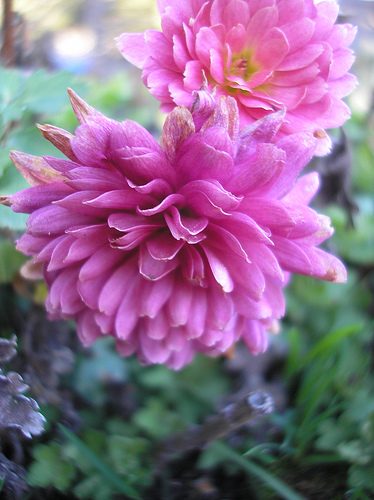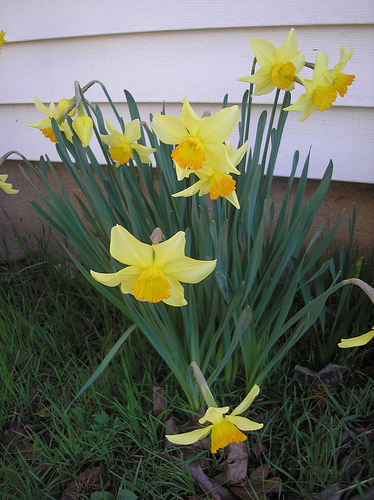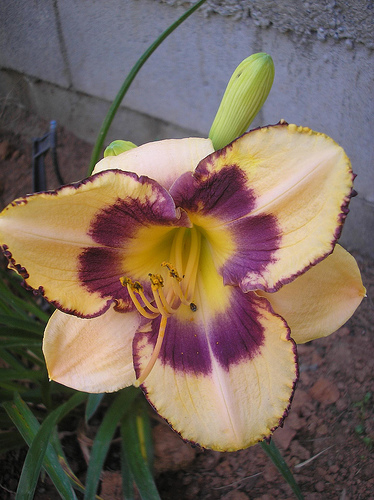In the latest issue of Organic Gardening, the cover article is all about bees. I had heard how honeybees had a bad winter last year and there are far fewer of them around but I hadn’t taken the time to find out what it was all about. Interesting stuff. The article brings out that scientists estimate that “more than 30% of the nation’s 2.4 million honeybee colonies died out over the fall and winter of 2006-2007” due to Colony Collapse Disorder. 35 states reported damage due to CCD. The damage was as high as 80-90 percent of their hives for some beekeepers.
What can we do to help the situation as home gardeners? The article brings out some easy steps that can make a difference. I always start planning my spring garden during the cold winter months so this article came at the right time and had lots of practical ways that I can plan my garden to benefit the local honeybee population.
Here are some ideas from Organic Gardening:
1. Plant flowers that are blue, purple, violet, white or yellow. The article suggests leaving the dandelions and Dutch clover in your lawn. Tip: Visit your local nursery and buy whatever you can find that has bees on it. My tip: Color and lots of it.
2. Skip flowers like marigolds and hollyhocks, impatiens, and salvia. The flowers are too dense for the bees to gather much nectar.
3. Try to plant for a three season bloom. The article says, “Spring is tough for bees. Common spring bulbs like tulips and daffodils aren’t attractive to bees. It’s good to have fruit trees or flowering shrubs to cover their early season needs.” Some choices they list for spring are calendula and wild lilac. For fall they suggest sedum, asters, and goldenrod.
4. Bees stay longer in gardens at least 3 to 4 feet in diameter.
5. Bees need a water source.
The article was very enlightening and will help me plan my garden to include plants and flowers that can help my local honeybees. This is a great way to tie your study of insects into your gardening time. I am planning on keeping track of which plants have bees on them. I know they *love* my spanish lavender and I have it planted in two long rows along the edge of my garden. Even now in the middle of November it has many bees in it every afternoon. I have observed bees in my cosmos that are left in the back of the garden. The plant doesn’t look as nice as it did in the middle of summer but the bees seem to enjoy it. My neighbor’s rosemary plants are always full of bees so that might be a good plant to try too.
It may not seem like each individual garden can help but according to this article about bees, we can.









